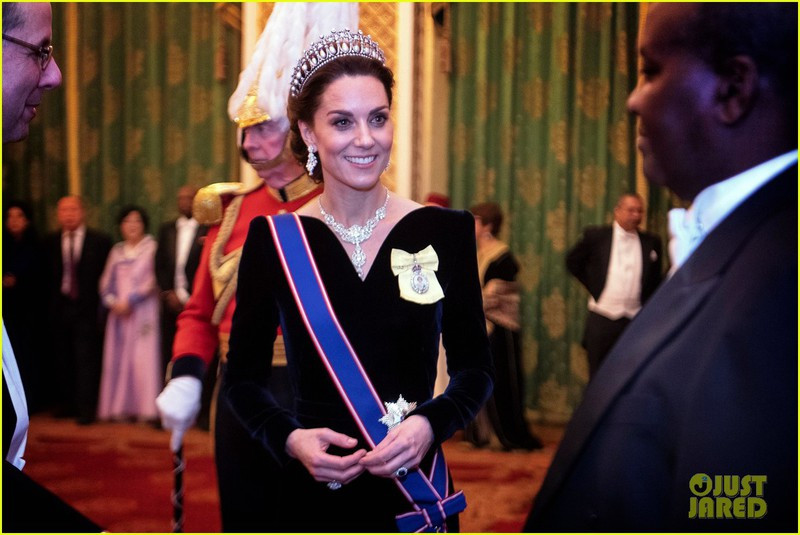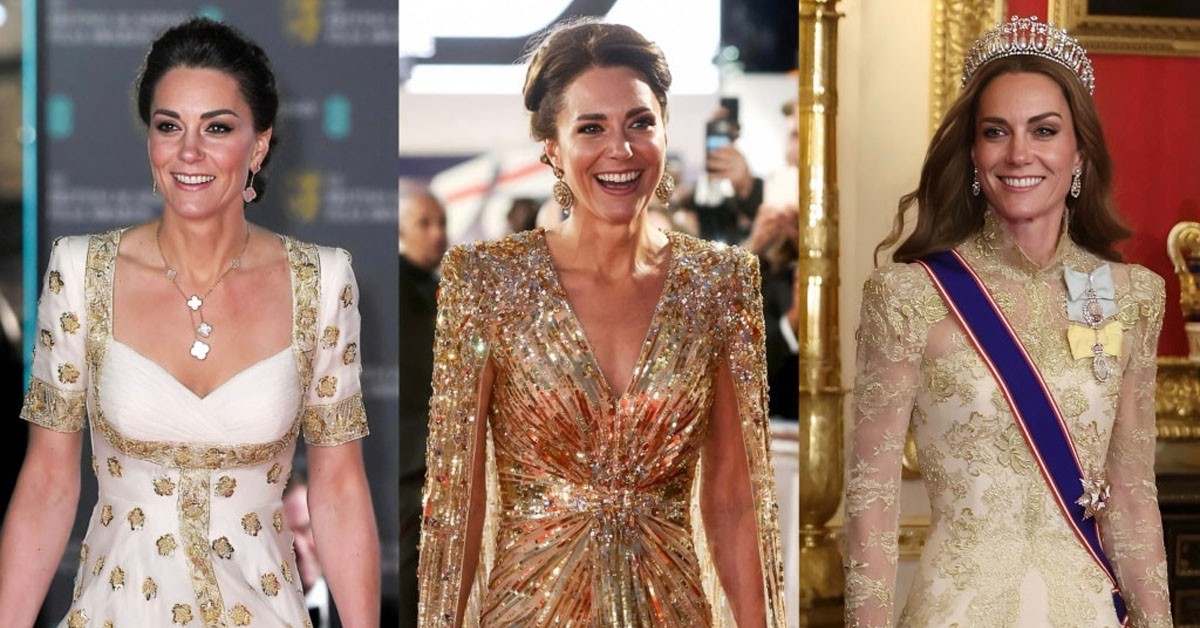
On a memorable evening at Buckingham Palace, Princess Catherine participated in a state banquet hosted for President Yoon Suk Yeol of South Korea and First Lady Kim Keon Hee. The event was participated by King Charles, Queen Camilla, Prince William, and around 170 esteemed guests, marking a significant occasion in royal engagements. The highlight of the evening was undoubtedly Catherine’s choice of headwear—the Strathmore Rose tiara, a piece not seen in public since the 1930s when it was last worn by the Queen Mother (source).

The Strathmore Rose tiara is a breathtaking piece of jewelry that has deep roots in royal history. Crafted with intricate floral designs, it symbolizes both elegance and tradition. Its reappearance after nearly a century adds a layer of nostalgia and connection to the past, highlighting the continuity of royal heritage. By choosing this tiara, Princess Catherine not only honored her predecessors but also made a fashion statement that resonated with the public and royal watchers alike.
Recently, Queen Camilla has implemented new guidelines regarding the wearing of crowns and tiaras among royal family members, aiming to modernize the monarchy and streamline royal appearances. However, Catherine's decision to don the Strathmore Rose tiara can be interpreted as a striking counter to these new protocols. It suggests a willingness to embrace tradition while navigating the contemporary landscape of royal responsibilities. This act of wearing a historical piece may be seen as a subtle assertion of her individuality and royal authority.

Catherine's choice has reignited interest in royal fashion and the significance of tiaras within the monarchy. Historically, tiaras have been symbols of status and power, often reserved for special occasions. By boasting a rarely seen piece, Catherine not only revitalizes interest in royal jewels but also encourages a dialogue about the role of tradition in modern monarchy. This event may inspire future generations of royals to embrace their heritage while also making it relevant to today's society

